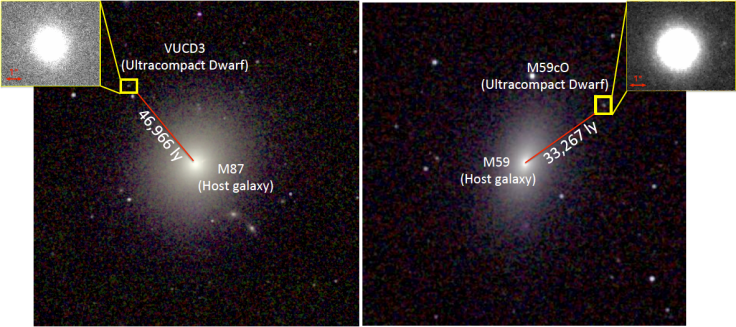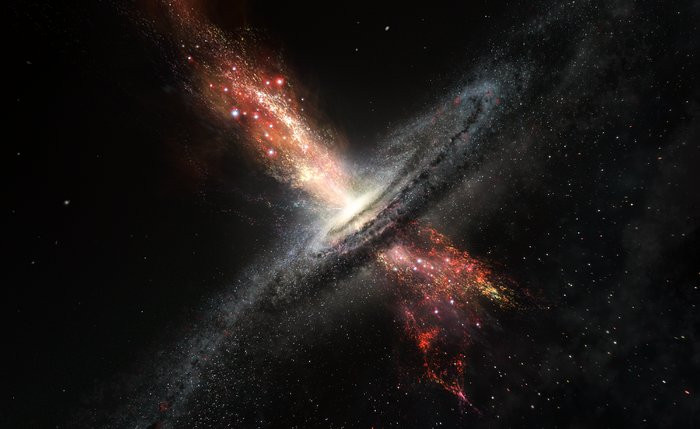Two supermassive black holes discovered hiding in tiny galaxies
Scientists think they have solved why such large black holes come to be in surprisingly small galaxies.
The existence of two supermassive black holes in amazingly small galaxies could double the estimate of the number of supermassive black holes in the universe.
Two ultra-compact dwarf galaxies called VUCD3 and M59cO were found to have supermassive black holes at their centres, finds a paper in The Astrophysical Journal. The galaxies are found in the Virgo cluster, each dwarf orbiting a much larger galaxy. Supermassive black holes have only been found in such a tiny dwarf galaxy once before, by the same group of researchers at the University of Utah.

"It's pretty amazing when you really think about it. These ultra-compact dwarfs are around 0.1% the size of the Milky Way, yet they host supermassive black holes that are bigger than the black hole at the centre of our own galaxy," said study author Chris Ahn.
Supermassive black holes are usually found in larger galaxies, so finding them in extremely tiny galaxies was a puzzle. The black hole at the centre of VUCD3 had a mass of about 4.4 million Suns. For such a tiny galaxy, this is huge – equivalent to about 13% of the total mass of the galaxy. The one at the centre of M59cO was even larger – about 5.8 million Suns, and 18% of the galaxy's total mass.
The researchers had to use a technique called adaptive optics to get a clear view of the dwarf galaxies. This involves using a laser shot into the sky, and a mirror moved extremely quickly at ground level to undo the distortion as the light passes through the Earth's atmosphere.
They saw that the central stars of the dwarf galaxies moved much faster than those at the edges of the galaxies – a hallmark indicating the presence of a black hole.
The answer came from looking at the context of where the two dwarf galaxies lie. VUCD3 orbits a larger galaxy called M87, and M59cO orbits the larger M59. These larger galaxies are thought to be stripping the smaller galaxies of their stars as they dive past the central mass of the larger galaxy.

This is thought to have hugely reduced the number of stars in the dwarfs, leaving a tiny shell of stars around the huge, central black holes.
"We know that galaxies merge and combine all the time – that's how galaxies evolve said Anil Seth, also a study author. "Our Milky Way is eating up galaxies as we speak."
"Maybe a fraction of the centres of all galaxies are actually these compact galaxies stripped of their outer parts," said Ahn.
© Copyright IBTimes 2025. All rights reserved.






















